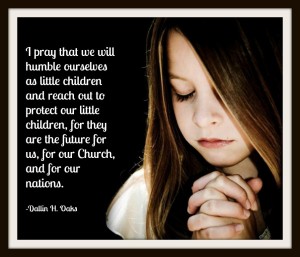
by megan | May 8, 2013 | Mormon Beliefs: Christian Values
The Atonement of Jesus Christ is the central doctrine of The Church of Jesus Christ of Latter-day Saints, sometimes referred to as the Mormon Church. The Book of Mormon, a book of ancient scripture that testifies of Jesus Christ, explains that the Savior’s Atonement is “an infinite atonement,” a “great and last sacrifice” to redeem the souls of all mankind (Alma 34:12-13, see also 2 Nephi 9:7). Jesus Christ did not just save those people who were alive when He was alive, nor does He save only those people who are baptized in mortality. Through baptisms for the dead, salvation is extended to all of God’s children.
Baptism: A Saving Ordinance

Latter-day Saints believe that baptism is a saving ordinance, one of several ordinances, or religious ceremonies, that must be performed in this life in order for an individual to be exalted in heaven. (See Doctrine and Covenants 128:12). Latter-day Saints also believe that baptism is by immersion in water, symbolizing the person dying and being reborn pure and free from sin. A person becomes a Latter-day Saint, or Mormon, by being baptized and then confirmed, another ordinance, a member of the Church. Being baptized is the first step on the path that leads back to live with Heavenly Father and Jesus Christ someday. (more…)

by megan | May 7, 2013 | Mormon Beliefs: Christian Values
Center. Anchor. Foundation. These terms describe the Savior and where He fits in my testimony, and in the testimony of other Latter-day Saints, sometimes referred to as Mormons. As a member of The Church of Jesus Christ of Latter-day Saints, Jesus Christ is the center of my beliefs, everything our faith, and the Church, is rightly called after His name.
Prophets’ Words About Christ

The Bible clearly testifies of Christ, recording His earthly ministry and Atonement for all mankind. In Paul’s letter to the Hebrews, he instructs the church members to look “unto Jesus the author and finisher of our faith” (Hebrews 12:2). Jesus Christ is the one who authored the Plan of Salvation, as well as the one who completed the Atonement. His doctrine of repentance and baptism is at the center of our faith. (See 3 Nephi 11:32).
In The Book of Mormon, a book of scripture written by ancient prophets on the American continent, Nephi, one of the authors, describes his and his family’s religion: “And we talk of Christ, we rejoice in Christ, we preach of Christ, we prophesy of Christ” (2 Nephi 25:26). Nephi lived 600 years before Jesus was born, yet he and his family had faith in Christ. Throughout the Book of Mormon, other prophets do exactly what Nephi describes, rejoicing in and testifying of our Savior Jesus Christ. (more…)

by megan | May 7, 2013 | Mormon Reflections
How to Pray
As a member of The Church of Jesus Christ of Latter-day Saints (inadvertently referred to as the “Mormon Church”), the doctrine of prayer is not new for me. Since I was born and raised in the Church, my parents taught me how to pray when I was very young. The steps they taught me were to:
- First, address God as Heavenly Father;
- Second, give thanks for His blessings;
- Third, ask for blessings or favors;
- Finally, close in the name of Jesus Christ.

They also taught me that prayers should be sincere, offered with real desire and belief that God was listening. We prayed all the time; as a family in the morning and again at night, blessings on the food, and invocations and benedictions for church meetings. However, it wasn’t until I was in college that I really started to have the meaningful conversations with Heavenly Father that personal prayers are supposed to be, and started to understand why we should pray. (more…)






